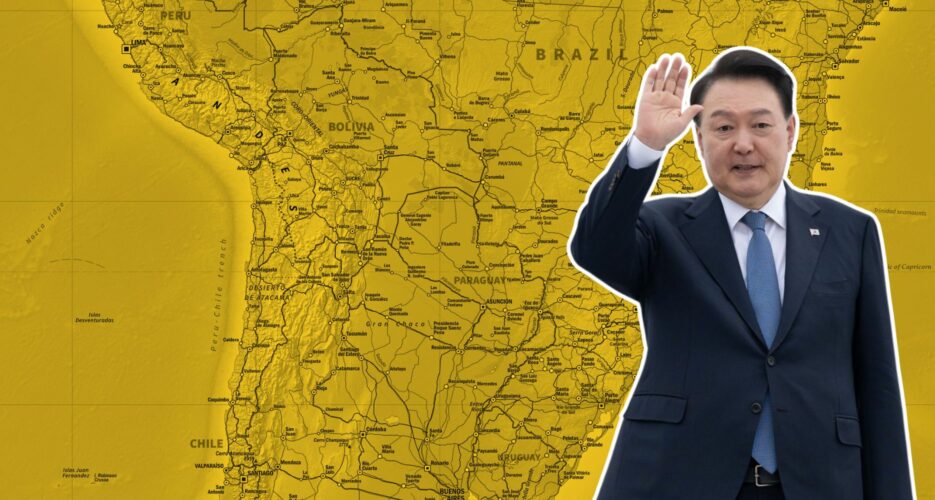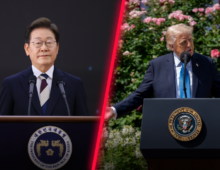Submarine project with Peru and resource deal with Chile highlight Seoul’s push to expand its global influence
A collage of a map of Latin America and South Korean President Yoon Suk-yeol | Image: Wikimedia Commons, ROK Presidential Office, edited by Korea Pro
Latin America’s limited defense budgets, political instability and entrenched competition from global powers present significant challenges to South Korea’s ambitions to expand its defense industry in the region.
Despite these obstacles, Seoul is making inroads into the region, leveraging defense agreements with Peru and carrying out diplomatic outreach at the G20 summit in Brazil.
Latin America’s limited defense budgets, political instability and entrenched competition from global powers present significant challenges to South Korea’s ambitions to expand its defense industry in the region.
Despite these obstacles, Seoul is making inroads into the region, leveraging defense agreements with Peru and carrying out diplomatic outreach at the G20 summit in Brazil.
Get your
KoreaPro
subscription today!
Unlock article access by becoming a KOREA PRO member today!
Unlock your access
to all our features.
Standard Annual plan includes:
-
Receive full archive access, full suite of newsletter products
-
Month in Review via email and the KOREA PRO website
-
Exclusive invites and priority access to member events
-
One year of access to NK News and NK News podcast
There are three plans available:
Lite, Standard and
Premium.
Explore which would be
the best one for you.
Explore membership options
© Korea Risk Group. All rights reserved.
No part of this content may be reproduced, distributed, or used for
commercial purposes without prior written permission from Korea Risk
Group.












